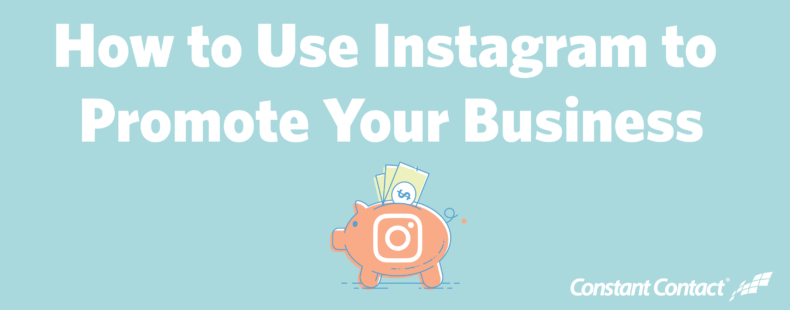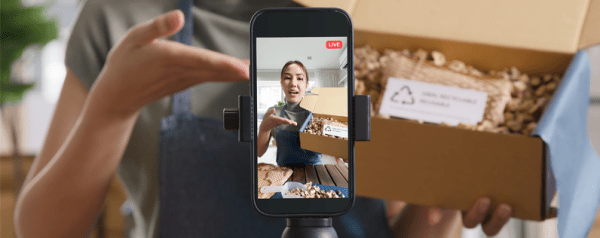
Instagram is a mobile photo editing and sharing app that saw its user base reach 600 million in December 2016.
Many savvy brands have joined the platform—especially retail brands with stunning visual content. Clothing, media, and design-based brands are a natural fit.
Like Facebook or Twitter, Instagram now has business-specific profiles.
So why are brands rushing to join yet another social network? Here’s why:
Instagram is easy-to-use — and awesome!
Instagram’s technology helps you easily create stunning images that you can easily use on your other social networks.
Both Facebook and Twitter have optimized how photos are displayed on these platforms and you can share directly from Instagram to those platforms (as well as to Tumblr, Foursquare, Flickr, and email) automatically or by individual selection.
Instagram allows visual storytelling
Both the way the platform works (the technology) and the way most users approach the platform (the user experience) allows brands to employ visual storytelling that has more continuity and artistic value than other platforms.
Instagram has recently introduced two new important features for visual storytelling: Instagram Stories and Instagram Live. With Stories, you can post pics and videos that are temporarily viewable before they self-delete. This is similar to Snapchat. With Live, you can live stream from Instagram. This feature will only get more popular in the coming year.
Instagram is mobile — perfect for what people want — instagramification
Instagram combines two of the most powerful forces in the social technology market—mobile and photo sharing—to create a platform that truly offers a unique value proposition. Brands with an Instagram presence can take advantage of that intersection where users are focusing their attention.
Here are five tips to help you get the most out of this powerful tool:
1. Use images to tell a story, not blast your branding
If you sell a product or service, make sure the images you use are about the experience of using the product or service and not a product placement ad.
Starbucks is an example of a big brand that does this well. Sure their photos show lots of Starbucks cups, but they also tell a story—the focus is always on what the person is doing while enjoying their coffee—on the beach, reading a book, etc.
There’s not a lot of tolerance for marketing that’s obviously marketing. Keep it subtle and keep the focus on your customers.
2. Be strategic with your photos
Don’t post just for the sake of posting. Make sure every picture (or video) you post is there for a reason. For example, making your posts comedic shows your company’s fun side. Featuring your employees reminds your audience of the real people behind the brand. No matter the category of your post, what’s important is that they’re posted for a deliberate reason with specific results in mind.
3. Don’t post too often
A general rule, don’t post more than a couple times a day. If you post more often than that, you run the risk of hogging your users’ feed. To find out the exact right amount to post, it will take a bit of trial and error as it depends on your audience.
Unlike Facebook, the commitment level to an account is low—”unfollows” can happen frequently.
And remember, you can use apps like PicFrame to include several pics in one Instagram. Just be sure the images are related and the impact is magnified (rather than splintered) when you use a collage.
4. Choose an account name that’s the same as your Twitter handle
Having the same Instagram account name and Twitter handle serves two purposes. One—your profile will be easily recognizable and easy to find. And two—if you are tagged by another user in a caption and that photo is shared on Twitter, that tag will link to your Twitter profile. It ensures that tagging makes sense when an Instagram photo is shared on other networks.
5. Use hashtags, but not every hashtag
Like on Twitter, hashtagging photos enables discovery of your profile by users outside of your primary connections. You can use the search functionality on the app to find out which hashtags are often used. Like on Twitter, hashtagging Instagram photos by event, geolocation, or subject matter is a good idea.
Other hashtags people tend to use on Instagram are filters and colors. Hashtags tend to be somewhat limited on Twitter due to the character length limitations. Because Instagram doesn’t have these limitations, this has encouraged some users and brands to stuff Instagram captions with every hashtag imaginable. Don’t do this—it looks like you’re trying too hard. Even worse, it makes you look like a spammer.
Bottom line: As the old adage goes—a picture is worth 1,000 words. It’s still true today, but with Instagram, a picture may also be worth 1,000 “likes,” retweets, and shares!
Is your business using Instagram? Tell us how you’ve used it to help promote your business!




